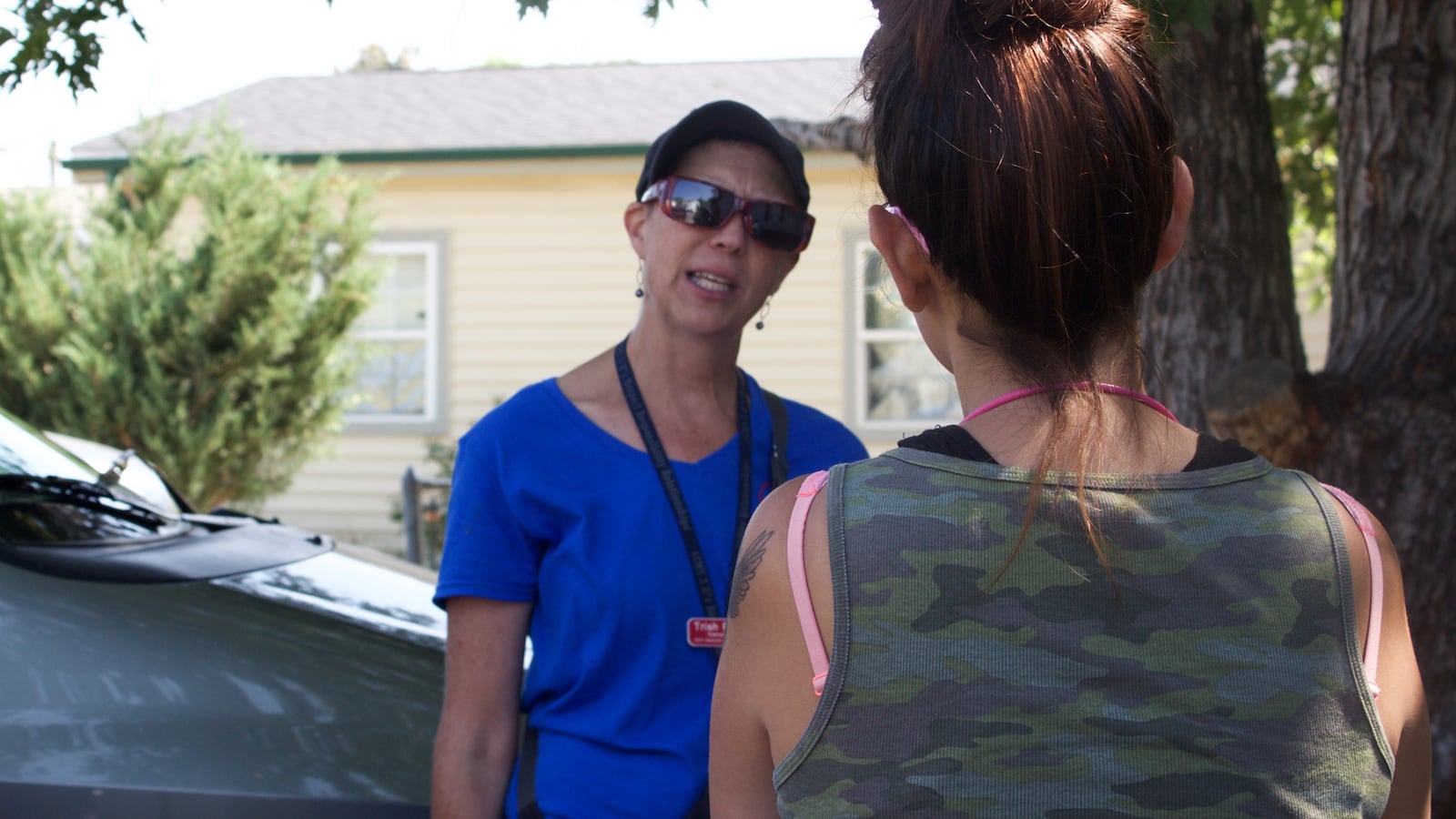COMMERCE CITY — On a recent Saturday morning, about a dozen teachers from the Adams 14 School District walked through a trailer park asking parents how they could do their jobs better.
Christina Zavala, a parent of three students, had a list. At the top: stop the rampant bullying and pay more attention to her son, who has a learning disability.
“In my experience,” she said, “it doesn’t really feel like the teachers care.”
The cadre of teachers hope what they heard — good or bad — can help reshape their schools to better meet the needs of the mostly poor and Latino families that call Commerce City home. The teachers are advocating for a “community school model,” which in part calls for more partnerships with nonprofit groups to help curb the effects of poverty on the classroom.
“The only way we can make a difference with the families in our district is if we get involved,” said Barb McDowell, the Adams 14 teachers union president. “There are a lot of disenfranchised people. We’re not talking to the community.”
Relations between the Commerce City community and the 7,000-student school district have long been strained. Voters consistently have rejected pleas to increase local taxes to repair or replace aging schools and support educational programs. And in 2014, the U.S. Department of Education found the district had discriminated against Hispanic students and teachers.
The district’s response included more culturally responsive training for teachers and the creation of a committee of students to regularly talk about race issues.
Facing state sanctions for chronic poor performance on state English and math tests, the Adams 14 school district, just north of Denver, is overhauling many of its schools. The teachers union believes this provides an opening to put into practice some of the elements of the community school model. Schools are still finalizing their innovation plans, which are expected to be made public later this fall.
Teachers across Colorado are engaged in similar work. It’s all part of a statewide campaign organized by the Colorado Education Association, the state’s largest teachers union, called “The Schools Our Kids Deserve.”
The community school model can be traced back to the 1880s. Modern-day community schools have popped up in Chicago, Baltimore and Lincoln, Neb. Perhaps the most famous community school model is the Harlem Children’s Zone in New York City.
In Colorado, the Edgewater Collective in Jefferson County and Blocks of Hope in neighboring Westminster Public Schools are two efforts to create something like a community school.
While supporters of the community schools model have long said that no two community schools should look the same because the needs of communities vary, there is a growing effort to identify common themes that apply everywhere, said Reuben Jacobson, deputy director for the Coalition of Community Schools.
The Colorado teachers union, working with the Alliance to Reclaim our Schools and the Center For Popular Democracy, has created its own list which includes strong and proven curriculum, community support services, and positive discipline practices.
Community engagement, like the work the teachers in Adams 14 are doing, is also a must.
Trish Ramsey, a teacher at Adams City Middle School, put it simply: “This is the first step to rebuild trust.”

